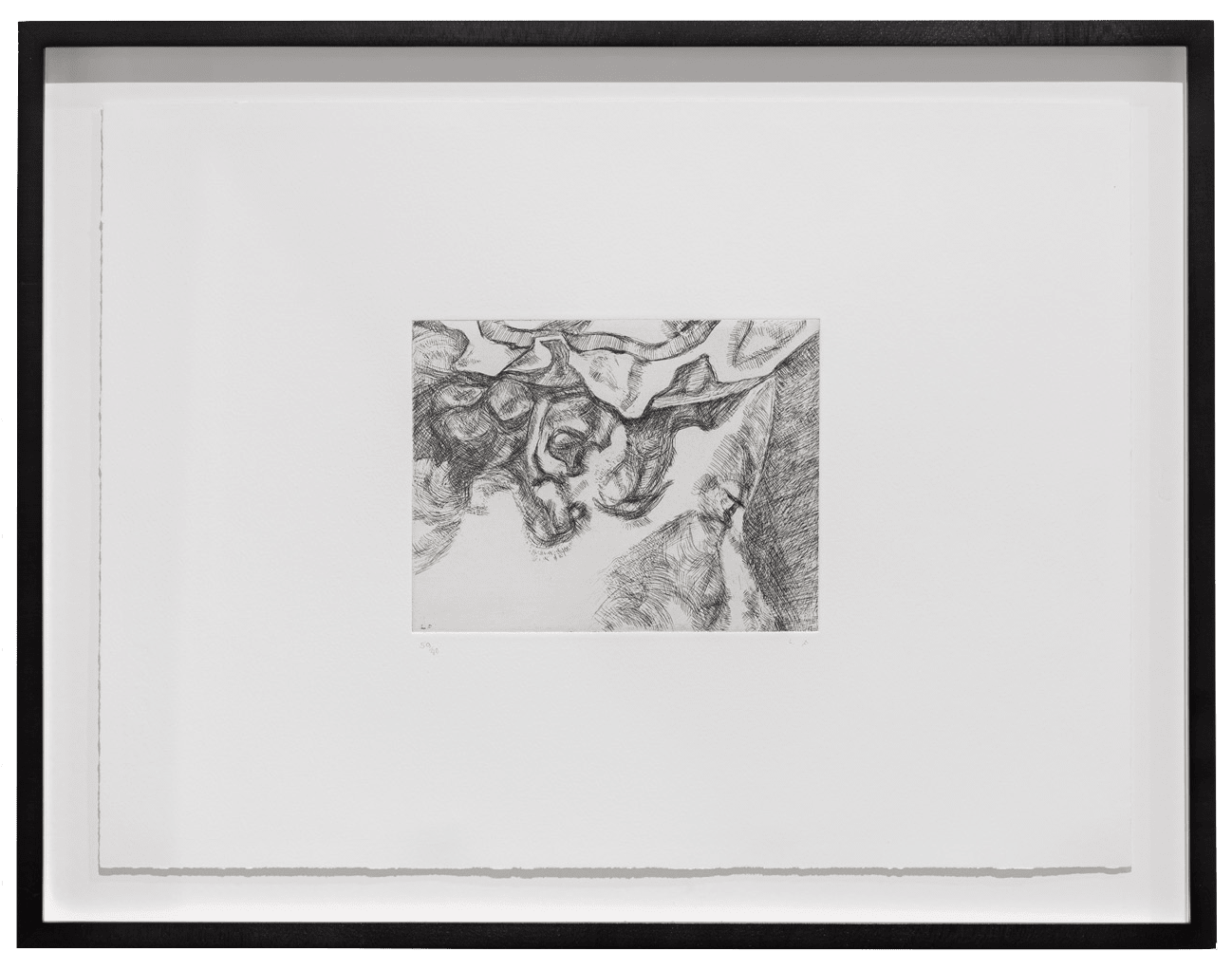Lucian Freud British, 1922-2011
After Chardin, 2000
Original etching on Somerset White paper, framed
Inscribed with the artist's initials in pencil, lower right on recto
Inscribed with the artist's initials in pencil, lower right on recto
38.0 x 51.1 cm (framed: 45.5 x 58.5 cm
© The Estate of Lucian Freud
By the end of the 20th Century Freud, of course, belonged to a small and privileged group of artists and academics who had earned standing permission to visit the National...
By the end of the 20th Century Freud, of course, belonged to a small and privileged group of artists and academics who had earned standing permission to visit the National Gallery at any time of the day or night of their choosing. He took full advantage of this opportunity, painting a version of Chardin’s The Young Schoolmistress and producing two etchings of the subject during many months of long sessions that stretched late into the night whilst he had the noble rooms to himself. Inspired to recreate Chardin’s work, Freud was attracted by the tenderness in the face of the young schoolmistress in teaching the attentive young boy. The large plate After Chardin of 2000 concentrates more tightly upon the two figures than does the original painting, and the subject of course is reversed due to the printing process. In this work, perhaps more than most, is the proof that the linear heritage of Freud’s drawing and printmaking style has been replaced by a technique that is by now very close to his methodology of painting. The smaller companion work After Chardin (small plate) is an indulgence, an exercise in personal enjoyment in concentrating solely upon the caring gaze of the schoolmistress that so engaged him and drew him to the work of the 18th C. French painter in the first place.
Join our mailing list
* denotes required fields
We will process the personal data you have supplied to communicate with you in accordance with our Privacy Policy. You can unsubscribe or change your preferences at any time by clicking the link in our emails.
